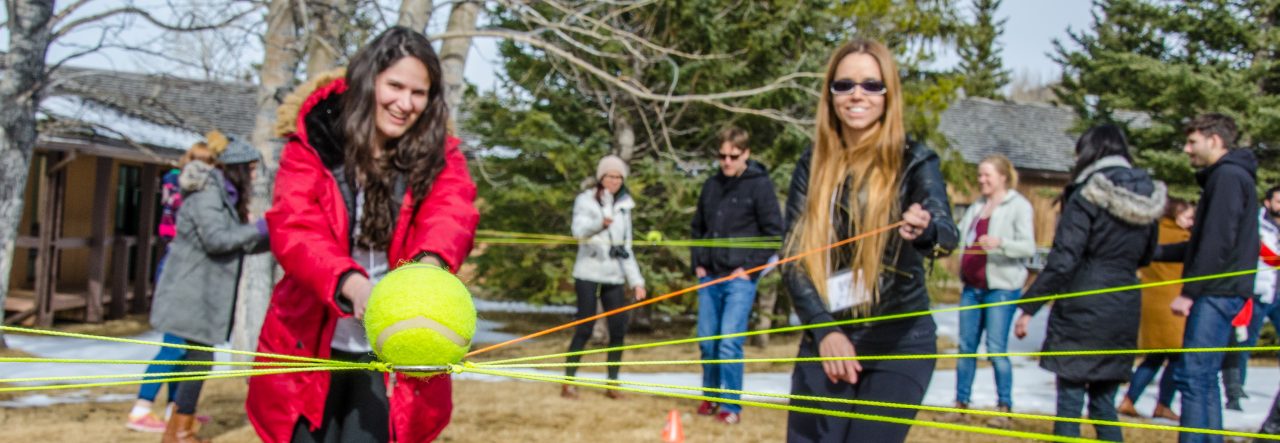By Naomi Chege Edited by Emily DeMichele Reincarnation? Sounds religious, right?! When you die and get reborn. Yes, that’s what I am talking about! If you don’t believe in reincarnation, parasites may change your mind. In my weirdest daydreams, science and non-science-based ideas come together to try to make sense of the world. It is …
Canadian Meat Lovers Beware: The American Hitch-Hiker!
By Justyna Kruczalak Edited by Emily DeMichele The lone star tick species displays sexual dimorphism, the female is well characterized by the white dot on the scutum of the tick. © Katja Schulz, some rights reserved (CC-BY). The Lone Star Tick and Alpha-gal Tickborne illnesses have been increasing within the past decades as temperatures rise …
Continue reading Canadian Meat Lovers Beware: The American Hitch-Hiker!
Fascination, disgust, and social media: how parasitologists can fight against medical misinformation online
By Claire Kamaliddin, PharmD, PhD Edited by Emily DeMichele As a parasite enthusiast, I sought online communities to discuss science, particularly parasitology. While social media such as Twitter, Mastodon, Blusky, or even Reddit offer virtual communities of scientists, other venues such as Facebook or Instagram might be full of surprises. Recently, I found a Facebook …
Bloody diarrhea in ye olden times: Who dunit?
A brief and incomplete history of bloody and mucusy poop By Ariel Kim Edited by Emily DeMichele Imagine you are minding your business (#2) when you look down and to your shock, find blood mixed in with your waste. These days, you can go to the doctor and take various tests to figure out what’s …
Continue reading Bloody diarrhea in ye olden times: Who dunit?
AI-powered chatbot, a useful tool for scientists
By Dimitri Desmonts de Lamache Edited by Emily DeMichele The integration and standardization of computing and omics technologies in research has facilitated the generation and analysis of increasingly larger datasets, enabling a deeper understanding of complex biological processes. As research becomes more intricate and interdisciplinary, scientists face the daunting task of sifting through an ever-growing …
Continue reading AI-powered chatbot, a useful tool for scientists
Human lice as disease vectors: From ancient times to modern-day
By Muhammad Bilal Edited by Emily DeMichele As researchers delve deeper into the fascinating world of louse evolution (louse: plural:lice are small, wingless, parasitic insect that typically infests the hairs of animals, including humans), they continue to uncover secrets that shed light on the history of humanity itself. Recently, a biologist, who was visiting archaeological …
Continue reading Human lice as disease vectors: From ancient times to modern-day
The Allied fight against malaria: or how I learned to stop worrying and take my atabrine
By Parker Volk Edited by Emily DeMichele Imagine for a moment that you are an American marine, tramping through the jungle and vegetation of some Pacific island (or, an Indian, African, Australian, Briton, or other Allied nationality in some other theatre of the Pacific or Italy). Absentmindedly you look to your exposed arm and see …
Vector-borne parasites of caribou in Canada
By Aparna Mariyam Thomas Edited by Emily DeMichele Caribou and reindeer (Rangifer tarandus spp.) are keystone wildlife species in arctic and sub-arctic areas. They play a central role in the day-to-day lives of Indigenous People as cultural icons, as well as providing them with food, shelter, and warm clothing. Hence, the health and well-being of …
Continue reading Vector-borne parasites of caribou in Canada
The HPI Bootcamp – A Postdoc’s Perspective
By Viraj Muthye The early-morning drive to Kananaskis was wonderful. Fall is my favorite season in North America and the brilliant Alberta Fall colors did not disappoint. Along with other members of my lab, I was heading to the HPI Bootcamp organized at the Barrier Lake Field Station. As a certified introvert, I was a …
Anthelmintic resistance in small strongyles (cyathostomins) of equids: The uncertain future of ivermectin
By Emily Huff Edited by Kyle Lesack Historically, large strongyles, such as Strongylus vulgaris were the most prevalent parasitic nematodes of horses, but widespread use of anthelmintic drugs has greatly diminished this threat (Love et al., 1999). In their place, cyathostomins (small strongyles) in the subfamily Strongyloidea are now an increasing cause for concern due …

